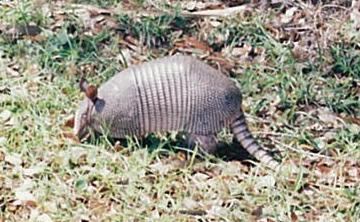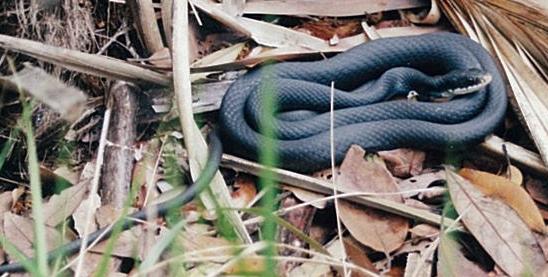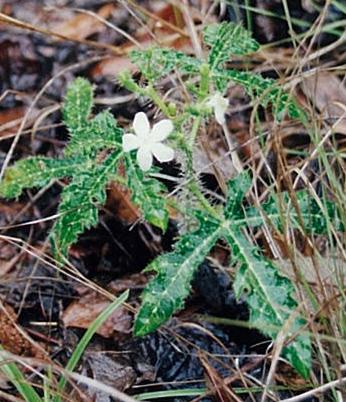Cumberland Island National SeashoreFrom the Virginia shore, along the coast to the tip of the Florida Keys, runs a line of islands made of sand; a similar line runs along the Gulf Coast from Florida to the Mexican border. These are called "barrier islands," and are really nothing more than big sand dunes on the ocean floor. Those with bridges to the mainland are tourist hotspots, because of their fine, sandy beaches.Just north of Cumberland are two such islands connected by bridge: Jekyll Island, and St. Simons Island. Jekyll is a Georgia State Park, but functions as a resort, with hotels, villas, golf course, marina, Summer Waves water park, and a toll to cross the bridge; St. Simons is a full-fledged town, with residences, businesses, parks, churches, and schools -- and a bridge no longer charges a toll. I have loved all three of these islands, but Cumberland is a world apart. The only way to get there is by boat -- either private or charter boat, or the way I came: the regular ferry run by the National Park Service out of St. Marys, Georgia. Much of Cumberland is a wilderness area; and, since the more people walk around in a wilderness, the less wild it becomes, the Park Service maintains the wilderness quality by strictly limiting the number of visitors. On any given day, only 300 people are allowed to visit, so ferry reservations can be difficult to get at peak times, but sometimes weather improves the odds: I once got a space on the boat because of rain, which caused some reserved passenger not to show up. And on any given day, only 60 people are allowed in the backcountry campgrounds, so most visitors stay on the southern tip of the island, either as day trippers, or staying at Sea Camp. This was the area where I used to bring groups of school kids; Environmental Education is part of the regular curriculum in the Georgia Public Schools, which of course has spawned a whole industry of providers competing for schools as customers. |
 One soon finds that Cumberland's history is colorful and romantic -- which is to say, miserable for those who actually lived it. It is a story of Timucua villages when the island was called Missoe; of 120 years of Spanish missions and forts under the name of San Pedro; under the present name, of great plantations of Sea Island cotton; and of opulent retreats for the rich of the Gilded Age. Very little remains of the Timucua or Spanish periods here; a few Antebellum chimneys of slave cabins remain, but these are currently in a closed, private parcel and cannot be visited by the public. The most famous relic of the Gilded Age is Dungeness, the ruins of the old Carnegie estate. And ruined it certainly is. This picture shows the inside, as seen through the hole where a window once was. A jungle of subtropical growth is slowly taking over the crumbling remains. Even the Carnegie's ornamental plantings have begun to go wild: at the back of the old garden overlooking the sea, a creeping fig has escaped and grown like a liana up the trees, even producing figs. It was here, too, I discovered that there are scorpions in Georgia, when a child pointed one out on the underside of the old fountain. Few artifacts remain at Dungeness, but it is forbidden to take any which may be found.
One soon finds that Cumberland's history is colorful and romantic -- which is to say, miserable for those who actually lived it. It is a story of Timucua villages when the island was called Missoe; of 120 years of Spanish missions and forts under the name of San Pedro; under the present name, of great plantations of Sea Island cotton; and of opulent retreats for the rich of the Gilded Age. Very little remains of the Timucua or Spanish periods here; a few Antebellum chimneys of slave cabins remain, but these are currently in a closed, private parcel and cannot be visited by the public. The most famous relic of the Gilded Age is Dungeness, the ruins of the old Carnegie estate. And ruined it certainly is. This picture shows the inside, as seen through the hole where a window once was. A jungle of subtropical growth is slowly taking over the crumbling remains. Even the Carnegie's ornamental plantings have begun to go wild: at the back of the old garden overlooking the sea, a creeping fig has escaped and grown like a liana up the trees, even producing figs. It was here, too, I discovered that there are scorpions in Georgia, when a child pointed one out on the underside of the old fountain. Few artifacts remain at Dungeness, but it is forbidden to take any which may be found. This is the Cumberland most people see: the Dungeness ruins and other buildings of the Carnegie estate, the old cemetary where Lighthorse Harry Lee's headstone may be seen among others of similar vintage, the herds of wild horses, and the beach not far away. There are legends of the Cumberland horses being descended from the horses of the Spanish, but this is not true. It has been determined that the horse herd here are descended from horses owned by the Carnegies. As elsewhere along the Atlantic Coast, the horses have their supporters among the public, but conservation biologists would prefer they were all removed, as they are not a natural part of this ecosystem; exclosures along the dunes clearly show the lush vegetation that would exist without the overgrazing. This was the first area seen by the kids on field trips.
This is the Cumberland most people see: the Dungeness ruins and other buildings of the Carnegie estate, the old cemetary where Lighthorse Harry Lee's headstone may be seen among others of similar vintage, the herds of wild horses, and the beach not far away. There are legends of the Cumberland horses being descended from the horses of the Spanish, but this is not true. It has been determined that the horse herd here are descended from horses owned by the Carnegies. As elsewhere along the Atlantic Coast, the horses have their supporters among the public, but conservation biologists would prefer they were all removed, as they are not a natural part of this ecosystem; exclosures along the dunes clearly show the lush vegetation that would exist without the overgrazing. This was the first area seen by the kids on field trips.
|
 What really won Cumberland's place on this website, though, was the time I came without kids -- indeed, without anyone -- and set out for the backcountry. Unencumbered by other people's kids, and the liability that goes with them, I could go deep into the wilderness area. With probably fewer than 20 people in the backcountry on this occasion, since the weekend had begun rainy, the chances were good I would see few if any in my explorations. It was true: although I had to share a campsite with one couple, once I was out on the trail, I was truly alone. Why did this matter? Because Lee Baxandall's World Guide to Nude Beaches and Resorts, 1995 edition, page 60, mentions Cumberland Island. To my knowledge, it is not an official nude area, but one where nude use is tolerated if discreet. I would not dare try it in the day trippers' area; but the backcountry seemed ideal. It was. I hiked nude all day (except for a daypack and shoes), and only once had to slip into my clothes upon hearing two other hikers in the distance.
What really won Cumberland's place on this website, though, was the time I came without kids -- indeed, without anyone -- and set out for the backcountry. Unencumbered by other people's kids, and the liability that goes with them, I could go deep into the wilderness area. With probably fewer than 20 people in the backcountry on this occasion, since the weekend had begun rainy, the chances were good I would see few if any in my explorations. It was true: although I had to share a campsite with one couple, once I was out on the trail, I was truly alone. Why did this matter? Because Lee Baxandall's World Guide to Nude Beaches and Resorts, 1995 edition, page 60, mentions Cumberland Island. To my knowledge, it is not an official nude area, but one where nude use is tolerated if discreet. I would not dare try it in the day trippers' area; but the backcountry seemed ideal. It was. I hiked nude all day (except for a daypack and shoes), and only once had to slip into my clothes upon hearing two other hikers in the distance.What lives in the Cumberland Island wilderness? Most notably, there are the feral hogs. I heard a crashing in the saw palmettoes, then saw the great black shape of a hog burst forth, only to vanish just as noisily into the equally-dense palmettoes on the other side of the trail. Clearly, something had spooked it, and soon, I saw what. A large alligator emerged from the underbrush, and settled down in the middle of the trail. I know better than to mess with a 'gator, but also knew that it would not come looking for trouble; so I stood at a safe distance, waiting, until it became all too obvious the reptile had no intention of moving. The saw palmettoes here were too dense for a naked human to push through. There was nothing for it but to backtrack and take a different trail. In another part of the island, I saw a whole family of hogs.  Less exciting than 'gators are the armadillos. This is one of those animals inhabiting the sort of shadow zone between native and introduced: native to part of the United States, but introduced to this part. The story I was told is that Texas armadillos were brought to Florida, whence they established themselves and began expanding northward. I know that by 2011, they were at least as far north as South Carolina, having somehow crossed the Savannah River. They were a nearly everyday sight in the woods of this part of the Georgia coast.
Less exciting than 'gators are the armadillos. This is one of those animals inhabiting the sort of shadow zone between native and introduced: native to part of the United States, but introduced to this part. The story I was told is that Texas armadillos were brought to Florida, whence they established themselves and began expanding northward. I know that by 2011, they were at least as far north as South Carolina, having somehow crossed the Savannah River. They were a nearly everyday sight in the woods of this part of the Georgia coast.With wild hogs, alligators, and rattlesnakes in abundance, why would anyone want to go naked into such a wilderness as this? There is a certain exhilaration in it. Knowing that literally nothing stands between your frail flesh and raw nature -- and that there is no one to hear, should you scream -- makes you more aware in all your senses. Add to this the awareness of your primal forbears rising to the surface, and it all makes sense. Even so, the danger is more percieved than actual. Sure, if you wound a feral hog, it will try to defend itself if it can; but that is only a real concern to hunters. In my experience, hogs ignore you if you watch from a distance. Likewise, alligators and rattlesnakes are only dangerous if messed with. I went without fear. Everywhere I went were signs of hogs: cloven hoofprints, and the overturned soil where the creatures' snouts had rooted. The hog is exotic here, and the Park Service has already made its plans to remove them all. I understand the ecological rationale, and I agree; hogs are known to prevent the regeneration of forests by eating the seeds and seedlings. Yet not everyone sees it that way. In the pro-hunting propaganda, we are told that hunters spend more on conservation than any other sector, because they have a vested interest in seeing their quarry survive and prosper. I have no reason to doubt this; one of the foremost organizations involved in conserving wetlands, for example, is Ducks Unlimited. But what happens when the contuinued presence of the quarry is ecologically harmful? Are hunters still so environmentally conscious then? I have heard of cases of hunters contracted to eliminate feral hogs from an area, who deliberately let some of the hogs live, thus ensuring the contract to hunt them will never end. These are certainly not the actions of an environmentalist. |
 The Cumberland wilderness is not like our usual idea of wilderness, i.e. a prisine environment untouched by man. Before becoming a National Seashore, it was mostly fields of cultivated land. Sea Island cotton and indigo were grown here, and, as mentioned, there are a number of old slave chimneys still standing. A walk through the backcountry trails will take the hiker through stretches where the pine trees grow in straight, regimented rows -- former timber plantations. Paradoxically, in our times, when it seems nature is beseiged on every side, Cumberland Island is wilder than it has been in hundreds of years.
The Cumberland wilderness is not like our usual idea of wilderness, i.e. a prisine environment untouched by man. Before becoming a National Seashore, it was mostly fields of cultivated land. Sea Island cotton and indigo were grown here, and, as mentioned, there are a number of old slave chimneys still standing. A walk through the backcountry trails will take the hiker through stretches where the pine trees grow in straight, regimented rows -- former timber plantations. Paradoxically, in our times, when it seems nature is beseiged on every side, Cumberland Island is wilder than it has been in hundreds of years. In this rewilding, despite the ravages of horses and hogs, glimpses of the primeval South can be seen. This black racer rested on fallen palmetto leaves where the thickets were dense. This flower blooming among longleaf pine needles is the spurge nettle (Cnidoscolus stimulosus), a stinging plant, but not related to the true nettle. Cumberland is one of the few places where longleaf pine (Pinus palustris) can still be found, though it was once the most abundant tree over most of the Southeastern Coastal Plain. In the Cumberland backcountry, one can get a sense of what those early Spanish missionaries might have seen, when they ventured beyond the Timucua villages and cornfields. What wild abundance did the Timucua know -- knowledge now lost?
In this rewilding, despite the ravages of horses and hogs, glimpses of the primeval South can be seen. This black racer rested on fallen palmetto leaves where the thickets were dense. This flower blooming among longleaf pine needles is the spurge nettle (Cnidoscolus stimulosus), a stinging plant, but not related to the true nettle. Cumberland is one of the few places where longleaf pine (Pinus palustris) can still be found, though it was once the most abundant tree over most of the Southeastern Coastal Plain. In the Cumberland backcountry, one can get a sense of what those early Spanish missionaries might have seen, when they ventured beyond the Timucua villages and cornfields. What wild abundance did the Timucua know -- knowledge now lost?The transformation from plantations to wilderness is reason for hope. The emerging field of restoration biology has its place, in those lands where humans are entrenched and human impacts are ongoing; but in our absence, nature can restore herself without our assistance. Given enough time, even the horses and hogs would evolve a new balance with their environment, though that balance would mean a different sort of landscape than what is there now, and possibly a different sort of horse or hog.  The height of the expedition was emerging out of the forest onto South Cut Beach. Looking both left and right, I could see there was not another soul for miles. Only the wild horses watched my nude form move silently across the sand, into the water. Yes, I know "only a fool swims alone." And yes, I know the waters off Cumberland are an important spawning ground for sharks. Nevertheless, standing in water up to my neck, I let the waves break over me, carrying me first toward shore, then away. I emerged, and let the sun and sea breeze dry my bare skin.
The height of the expedition was emerging out of the forest onto South Cut Beach. Looking both left and right, I could see there was not another soul for miles. Only the wild horses watched my nude form move silently across the sand, into the water. Yes, I know "only a fool swims alone." And yes, I know the waters off Cumberland are an important spawning ground for sharks. Nevertheless, standing in water up to my neck, I let the waves break over me, carrying me first toward shore, then away. I emerged, and let the sun and sea breeze dry my bare skin.I hated to do it, but I dressed on the trail back to the campground. Real life demands that one leave such places as this. But having been in an island of wilderness, one can return with a renewed outlook to the everyday world.
|